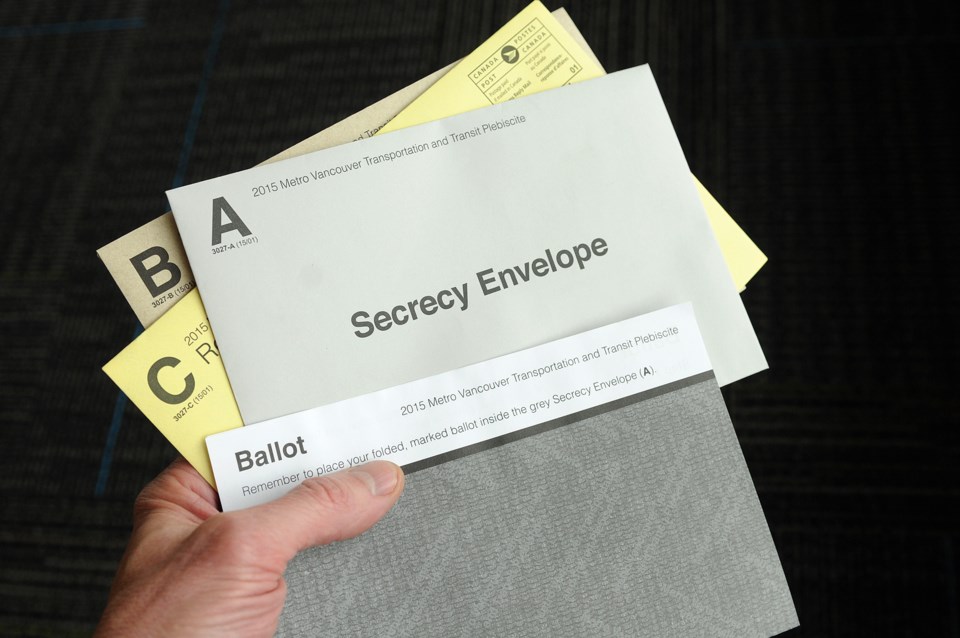I received my transportation and transit plebiscite ballot Wednesday.
I plan to vote.
And I plan to dutifully drop my carefully sealed ballot in the mailbox at the end of my street so it finds its way to Elections B.C. for counting.
I wonder how many will do the same.
What do you think — will voter participation be more or less than the 43.4 per cent of eligible voters who took part in the 2014 civic election?
Maybe these numbers will give some perspective:
• The last time Elections B.C. ran a mail-in only vote was in 2011 when voters cast ballots in the HST referendum. Remember that one? The province-wide vote saw 52.7 per cent of eligible voters return ballots, with a majority electing to scrap the HST.
• When Christy Clark’s Liberals embarrassed pollsters with their surprising win in the 2013 provincial election, voter turnout was 57 per cent.
“Is there any reason that I would think [turnout for the plebiscite] would be any different?” said Don Main, a spokesman for Elections B.C. “Not necessarily. But it depends on engagement and people’s awareness of it.”
Main pointed out 1.56 million packages, which include a certification envelope, “secrecy” envelope and the ballot, will have been mailed to registered voters in Metro Vancouver by March 27. Elections B.C. also plans to open nine service centres around Metro Vancouver in April and have staff on hand to answer questions and collect ballot packages, if people choose not to mail them.
Though the public won’t learn the results of the vote until sometime this summer, Elections B.C. plans to at least give us a sense of how many people have voted. Beginning April 1, on a weekly basis, the agency will release the number of ballots returned in each of the 23 municipalities.
Unlike last year’s civic election, where final results were tabulated by a machine and released within hours of the polls closing, the plebiscite ballots require 50 staff to manually open all the envelopes.
It’s, as Main described, “labour intensive.”
So how much is all this costing?
About $6.2 million.
Yep, that’s a lot of cash.
But not when compared to the $36 million it cost to administer the 2013 provincial election — the same election that led to the Liberals calling for a plebiscite on any new funding tools proposed to pay for transit and transportation upgrades.
Hence the ballot.
Hence the request for a 0.5 per cent increase to the existing seven per cent sales tax to help pay for a 10-year, $7.5 billion plan that aims to cut congestion.
Regular readers will have read the back-and-forth between the Yes and No sides, and I trust some of you actually read the mayors’ 10-year plan.
Many of you likely already voted.
For those who haven’t, and are registered to vote, then open up that envelope and vote. One mark for a Yes or No is all it takes and maybe a walk, ride or roll to the mailbox.
If you’re not registered to vote, then get registered.
If you don’t vote, don’t complain.
twitter.com/Howellings



